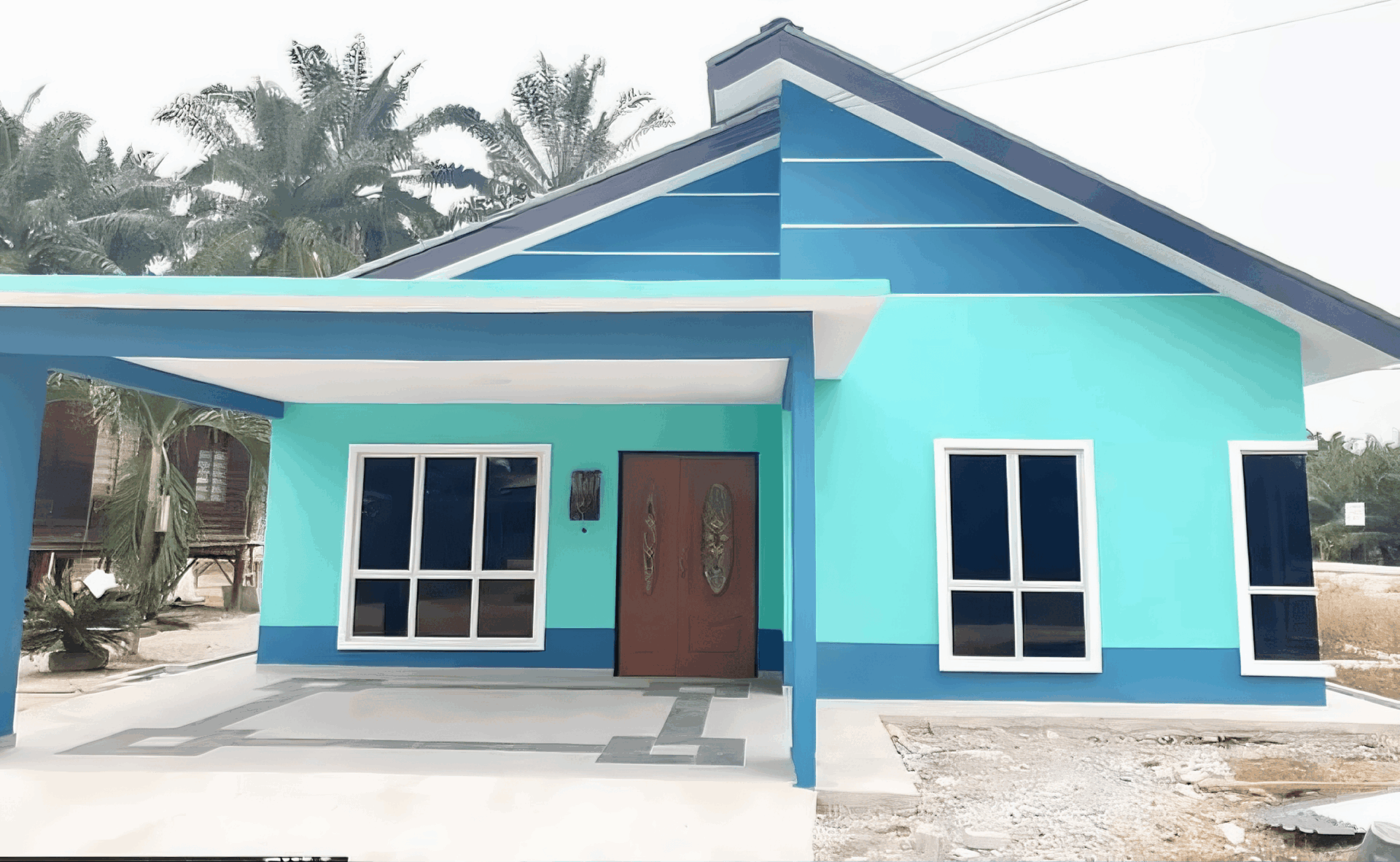As the world stumbles its way into a post-pandemic era, Malaysia finds itself at a unique crossroads, especially in the construction sector. Remember the bustling construction sites, the rhythm of machinery, and teams working shoulder to shoulder? Well, things have changed, and so have the rules of the game.
With safety protocols in place and a greater emphasis on technology, Malaysian construction companies are rethinking and reshaping their strategies to navigate this new normal. It’s not just about building structures anymore; it’s about building resilience, reimagining workflows, and embracing innovation in ways we never thought possible. So, let’s dive into how these companies are rolling with the punches, adapting to challenges, and ultimately, paving the way for a brighter, more sustainable future in construction.
Evolving Business Models for Resilience and Growth
In the wake of the pandemic, Malaysian construction companies have shown remarkable agility in reshaping their business frameworks. Rather than relying solely on traditional project models, many are now exploring hybrid strategies that integrate innovative technology and sustainable practices. By investing in Building Information Modeling (BIM) and adopting green construction techniques, these firms are not only cutting costs but also enhancing their project efficiency. Embracing digital tools has allowed them to track resources and timelines more effectively, ultimately ensuring on-time project completion even under challenging circumstances.
Another significant trend is the emphasis on collaborative partnerships. Companies are forming strategic alliances with local suppliers to foster a more resilient supply chain. By prioritizing local resources, they not only reduce dependency on global markets but also contribute to the economic growth of their communities. Additionally, many organizations are engaging in joint ventures that pool expertise and resources, leading to innovative solutions that tackle complex challenges faced during the reconstruction phase. The focus is on creating synergies that add value across all stages of development.
Furthermore, the shift towards flexible business models has taken center stage. Many construction firms are rethinking how they engage with clients and stakeholders, emphasizing adaptability and customer-centric approaches. Companies are now offering customizable solutions and are open to modifying project scopes based on evolving client needs. This agility not only builds trust but also opens doors for repeat business and referrals. As a result, the construction landscape in Malaysia is transforming, with a clear trajectory toward sustainable growth, resilience, and innovation.

Embracing Digital Transformation in Construction Practices
The construction industry in Malaysia has witnessed a significant shift, driven largely by the challenges posed by the pandemic. Companies are increasingly embracing digital tools and technologies to streamline their operations and enhance project outcomes. Not only does this transition facilitate better communication among stakeholders, but it also allows for real-time data collection and analysis, making decision-making quicker and more informed.
To successfully adapt to the current landscape, many firms have been integrating a range of innovative solutions, including:
- BIM (Building Information Modeling): Creating 3D models to improve design accuracy and collaboration.
- Cloud-Based Project Management Tools: Ensuring teams can access project data anytime and anywhere.
- Drone Technology: Utilizing aerial imagery for site surveying and monitoring progress.
Furthermore, to illustrate the direct impact of these changes, consider the impressive enhancements in productivity and cost-effectiveness. The table below showcases some key industry metrics pre- and post-adoption of digital technologies:
| Metric | Pre-Digital Adoption | Post-Digital Adoption |
|---|---|---|
| Average Project Duration | 12 months | 9 months |
| Cost Overruns | 20% | 10% |
| Client Satisfaction Score | 70% | 85% |

Sustainability as a Cornerstone of Post-Pandemic Strategies
As the world continues to navigate the shifts brought on by the pandemic, many Malaysian construction companies are embracing sustainability not just as a trend but as a vital element of their operational strategies. This commitment stems from a growing recognition that environmentally responsible practices can lead to cost savings, efficiency improvements, and a stronger brand reputation in the eyes of conscious consumers. From sourcing eco-friendly materials to implementing waste reduction measures, organizations are making strides toward greener project management.
One innovative approach adopted by several firms is the integration of green technologies in their construction processes. This includes using solar panels and rainwater harvesting systems, which not only reduce the ecological footprint but also provide long-term savings. Moreover, as organizations pivot to embrace sustainable practices, they are enhancing their workforce with training programs focused on sustainability, catering to the need for skilled workers who can navigate these new methodologies efficiently. Here are some key areas where these firms are making impactful changes:
- Recycling Construction Waste: Companies are developing robust systems to recycle materials, minimizing landfill contributions.
- Eco-friendly Certifications: Pursuing certifications like LEED (Leadership in Energy and Environmental Design) to showcase commitment to sustainability.
- Local Sourcing: Reducing emissions associated with transportation by sourcing materials locally.
To effectively track their progress, many construction firms are employing data-driven approaches, allowing them to set, monitor, and achieve sustainability goals. This data-centric focus is often represented in easily digestible formats, such as the following table highlighting essential sustainability metrics:
| Metric | 2021 | 2023 | Goal |
|---|---|---|---|
| Energy Consumption (% Reduction) | 10% | 18% | 25% |
| Material Waste Recycled (%) | 30% | 50% | 70% |
| Water Usage (% Reduction) | 5% | 10% | 20% |

Enhancing Workforce Wellbeing and Safety Measures
Malaysian construction companies are stepping up their game when it comes to the wellbeing and safety of their workforce in the wake of the pandemic. More than ever, they recognize that a safe and healthy workforce is not just beneficial for employees, but also crucial for business success. Implementing robust safety protocols has become a top priority, ensuring that workers feel secure and valued on-site. This includes regular health screenings, enhancing sanitation measures, and ensuring adequate social distancing.
Companies are also investing in mental health initiatives to address the psychological impacts of the pandemic. Workers are now offered access to counseling services, workshops on stress management, and support groups, fostering an environment of openness and understanding. Here are some of the key measures undertaken:
- Mental health support programs
- Work-life balance initiatives
- Flexible work hours for better personal commitments
- Health and safety training sessions
Moreover, technology plays a pivotal role in enhancing safety protocol compliance. Companies are increasingly turning to digital solutions, introducing smart wearable devices that monitor worker health metrics and location in real-time. This not only helps prevent accidents but also ensures immediate response in emergencies. To better illustrate these advancements, here’s a quick look at the shift towards tech-enabled safety:
| Technology | Purpose |
|---|---|
| Wearable Tech | Monitoring health & location |
| Safety Apps | Real-time reporting of incidents |
| Virtual Training | Continual skill development |

Leveraging Local Supply Chains for Increased Efficiency
In the wake of the pandemic, Malaysian construction companies are increasingly turning to local supply chains as a strategy to boost efficiency and resilience. By sourcing materials and services from nearby suppliers, businesses can mitigate the risks associated with global disruptions. A centralized, local approach not only shortens delivery times but also fosters stronger relationships with partners, leading to improved communication and collaboration on projects.
Additionally, tapping into local resources has allowed companies to reduce costs. Transportation expenses shrink as materials travel shorter distances, and projects can start sooner without the long wait times associated with international shipping. Moreover, local suppliers often provide more flexibility, allowing construction firms to adapt quickly to project changes or unexpected demands. The emphasis on sustainability and supporting local economies adds a positive reputation to companies that are making this shift.
To illustrate the impact of local supply chains, consider the following benefits:
| Benefit | Description |
|---|---|
| Cost Efficiency | Reduced transportation and material costs from local sourcing. |
| Faster Delivery | Shorter shipping times mean quicker project initiation. |
| Flexibility | Easier adjustments to changes in project needs. |
This shift towards local supply chains is not just a tactical response—it’s a strategic pivot that reflects the evolving landscape of the construction industry in Malaysia. As companies continue to rebuild and innovate post-pandemic, leveraging local resources will likely remain a cornerstone of their operational strategies, ensuring sustained growth and adaptability in this new normal.

Fostering Collaboration through Innovative Partnerships
In the wake of the pandemic, Malaysian construction companies are rethinking traditional approaches and embracing innovative partnerships that foster collaboration and resilience. By joining forces with tech startups, industry leaders are leveraging cutting-edge solutions to streamline operations and enhance productivity. This approach not only ensures that projects move forward efficiently but also cultivates a culture of shared knowledge and expertise. A few key attributes of these partnerships include:
- Resource Sharing: Companies are pooling resources to tackle common challenges, reducing costs and optimizing output.
- Technology Integration: Collaborations with tech firms are introducing advanced project management tools that improve planning and execution.
- Skill Development: Joint training initiatives enable workers to enhance their skillsets, preparing them for future demands in a rapidly evolving market.
Moreover, these partnerships are proving beneficial in exploring sustainable practices—a vital component in today’s construction landscape. By collaborating with environmental organizations and researching firms, companies are finding innovative ways to integrate a green agenda into their projects. This commitment to sustainability not only fulfills regulatory requirements but also attracts clients who prioritize eco-friendly practices. Here’s how this shift is manifesting:
| Partnership Type | Benefits |
|---|---|
| Tech Startups | Enhanced efficiency through automation |
| Environmental Groups | Implementation of sustainable practices |
| Academic Institutions | Research and development of new materials |
By actively pursuing these collaborations, Malaysian construction companies not only adapt to the new normal but also position themselves as leaders in innovation and sustainability. As the industry evolves, fostering positive relationships and partnerships will be essential in overcoming challenges and maximizing opportunities. Embracing this collaborative spirit will undoubtedly pave the way for a resilient and dynamic construction sector in Malaysia.

Navigating Regulatory Changes in the New Normal
In the aftermath of the pandemic, Malaysian construction companies find themselves facing a landscape of evolving regulations and guidelines that demand flexibility and quick adaptation. Navigating through these changes means being proactive in understanding new legal frameworks that impact project timelines, safety measures, and construction practices. Companies are investing in continuous training for their workforce, ensuring they stay updated on the latest compliance requirements while encouraging a culture of safety and responsibility.
To align with regulatory changes, many companies are embracing digital transformation. From digital project management tools to virtual site inspections, technology is becoming essential in meeting compliance without compromising efficiency. This shift not only streamlines operations but also enhances communication with stakeholders. The integration of these technologies helps companies to maintain transparency in their processes, which is crucial for regulatory adherence.
Furthermore, collaboration with government bodies and industry associations is more important than ever. Building strong partnerships allows construction firms to influence policy-making while keeping abreast of upcoming regulations. Workshops and forums provide platforms for knowledge exchange, enabling businesses to learn best practices from each other. As a result, the construction sector can collectively enhance its resilience in the face of ongoing regulatory evolution.

Future-Proofing Infrastructure Through Smart Technology Integration
As the construction landscape in Malaysia evolves, the focus is shifting significantly towards the adoption of smart technologies. This new wave of innovation is helping construction companies to not only enhance productivity but also create resilient infrastructures that can withstand future challenges. By integrating IoT, AI, and advanced analytics, companies are transforming their operations into more efficient and adaptable systems capable of responding to dynamic market conditions.
Some of the key technologies driving this transformation include:
- Building Information Modelling (BIM): Streamlining project management and reducing errors during construction.
- Smart Sensors: Monitoring structural integrity in real-time, ensuring safety and longevity.
- Cloud Computing: Facilitating seamless collaboration across teams and improving data accessibility.
Moreover, the integration of smart technologies allows companies to engage in sustainable practices, significantly reducing waste and energy consumption during construction processes. A recent survey among Malaysian construction firms highlighted astonishing statistics:
| Technology Adopted | % of Companies Implementing |
|---|---|
| IoT Solutions | 70% |
| AI in Project Planning | 55% |
| Green Building Practices | 80% |
This proactive approach ensures that the Malaysian construction industry not only navigates the post-pandemic landscape but also emerges stronger, ready for whatever the future holds. Each adaptation moves the sector closer to achieving a smart, resilient, and sustainable construction environment that meets both current and future demands.
Insights and Conclusions
As we wrap up our exploration of how Malaysian construction companies are navigating the new normal after the pandemic, it’s clear that adaptability is the name of the game. From embracing cutting-edge technologies to prioritizing safety and sustainability, these companies are not just bouncing back—they’re evolving. The challenges of the past few years have forced a shift in mindset, and with that, opportunities for growth and innovation are emerging.
While the road ahead may still have its bumps, the spirit and resilience of the Malaysian construction industry shine brightly. As they continue to adapt and rethink their strategies, the landscape of construction in Malaysia is set to become more dynamic than ever. So, whether you’re in the industry or just keenly observing, keep an eye on how these changes unfold. The journey is only just beginning, and it’s bound to be an interesting one!
Source link
kontraktor rumah
bina rumah
pinjaman lppsa
pengeluaran kwsp
spesifikasi rumah
rumah batu-bata
pelan rumah
rekabentuk rumah
bina rumah atas tanah sendiri
kontraktor rumah selangor
rumah banglo




